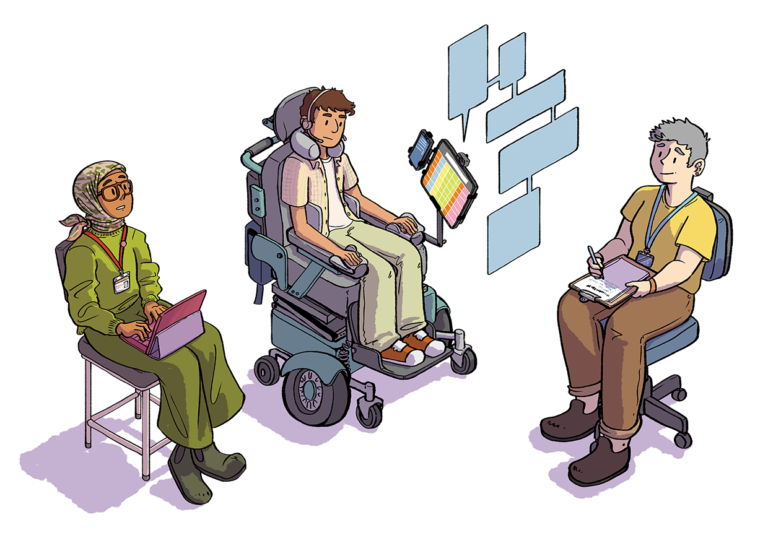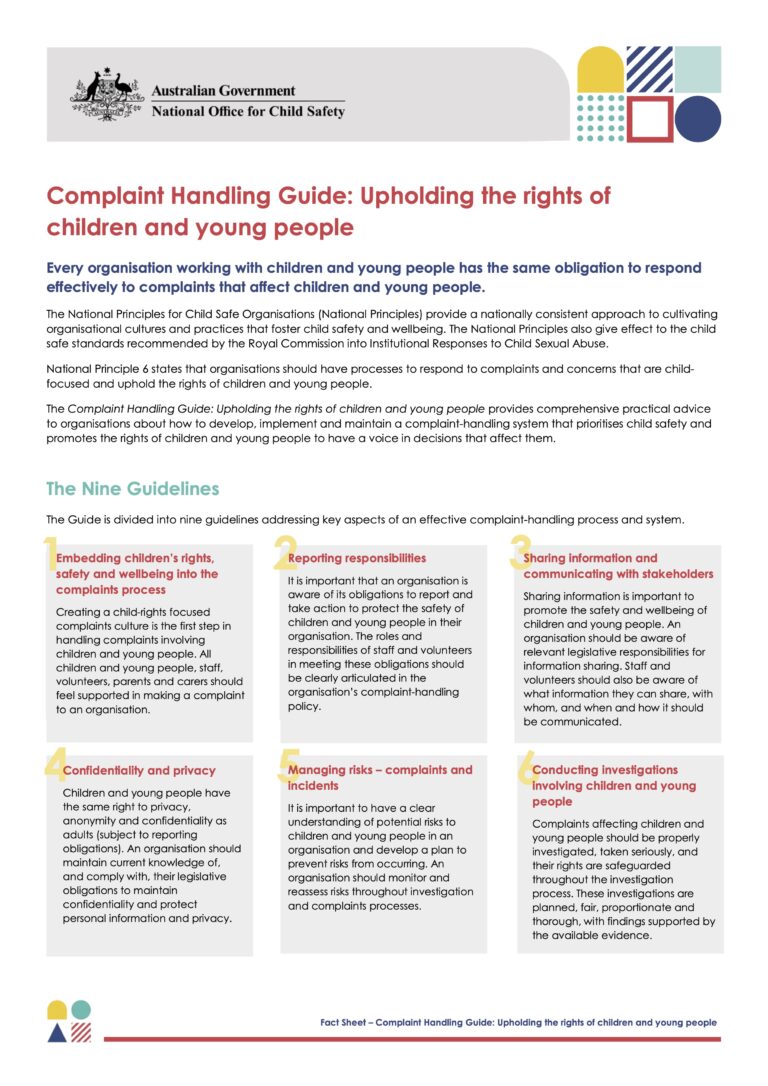Complaints processes for disabled young people
As an NDIS service provider, you need to have a complaints process.
It’s important that your complaints process is suitable for disabled young people. This means that it is accessible, approachable, and easy to use.
Making your complaints process accessible benefits everyone.

Safety of children with disability
The Victorian Commission for Child Safety has created a tipsheet on ensuring the safety of disabled young people during a complaints process.
Even if you only work with disabled young people who are no longer ‘considered children’, child safety practices can still be beneficial to better support disabled young people.
Your responsibilities
Whether you’re starting from scratch, or updating your current complaints process, there are a few things that you should consider to make your complaints process disabled youth friendly.
Firstly, think about what might make processes not disabled youth friendly. This helps you identify what can be avoided. It helps us think about what barriers might already exist in your business or organization. From there, you can address those barriers and work to remove them.
Barriers that disabled young people face when making complaints
We've asked a range of disabled young people what barriers they experience to making complaints, and this is what they had to say:
Feeling like the issue or concern is too small or not bad enough to complain about
Not being able to articulate the problem in the way they think is expected of them
Being worried that they will face a negative reaction because of their complaint, such as losing access to their services and supports.
Not knowing they're allowed to make a complaint
Not 'wanting to make a fuss' or be seen as a problem
Not knowing how to start the process
Feeling disempowered to speak out due to a past negative experience
Providers having a rigid way to make complaints.
Not having support from people around them to make a complaint
The word 'complaint' itself. Disabled young people prefer terms like 'speak up' or 'raise a concern' because the word 'complaint' seems too serious and official.
Complaint Handling Guide: Upholding the rights of children and young people
Now that you’re aware of the barriers disabled young people might face making a complaint in your business or organisation, you can use the information here to remove them.
The Australian Government has developed a complaint handling guide, that can support you and your organisation to develop, implement and maintain a complaint-handling system that prioritises child safety and promotes the rights of children and young people to have a voice in decisions that affect them.
The Guide is divided into nine guidelines, each addressing key aspects of an effective complaint-handling process and system. The Guide is also accompanied by an information sheet and reference guide to support organisations of all sizes navigate the material.
The Website provides PDF and Word versions of the full guide, a fact sheet, a reference guide, and an Easy Read document.
View the guide
Complaint Handling Guide: Upholding the rights of children and young people
Download the PDF Factsheet here. All other documents can be found on the website linked above.
Fact Sheet (PDF)By tailoring your complaints process to disabled young people, you meet your requirements as an NDIS provider, and reduce the likelihood of a complaint being made against your business.
For more information, and examples of youth friendly, accessible and co-designed processes, check out YERP – a site about how to support young people.
How to set up a youth-friendly complaints process - YERPRelated topics
-
Check out some handy tips to think about when developing or updating your complaint process.
Tips to create a disabled youth friendly process
-
Learn about how you can make sure your communications are accessible so disabled young people can better understand and engage with the complaints process.
Accessible Communication
-
Learn about how to respect the privacy of disabled young people throughout the complaint process.
Support and privacy
-
Learn about what you can do to make sure your organisation is constantly improving and adapting to meet the needs of your clients.
Ongoing improvement
-
Learn about the protections offered to people making a complaint, and why you should let disabled young people know about this, even if they don't have a complaint.
Victimisation and Adverse Action
-
Learn more about co-designing your complaint process with disabled young people and stakeholders in your community.
Co-Designing your Complaint Process
-
If you don’t get any complaints or feedback (good or bad), that doesn’t mean you can stop thinking about access and inclusion.
Receiving complaints from disabled young people